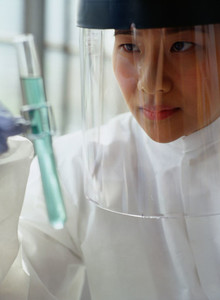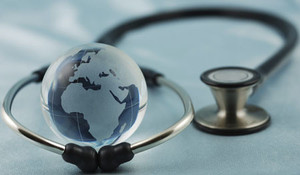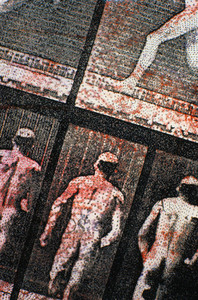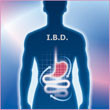Period: January to August 2012
A life-threatening complication for patients undergoing chemotherapy is febrile neutropenia, involving a loss of neutrophils (white blood cells) and fever [1]. Granulocyte colony-stimulating factors (G-CSFs) are growth factors, which stimulate the bone marrow to produce white blood cells and restore neutrophil production. In oncology and haematology, G-CSF is used with certain cancer patients to accelerate recovery from neutropenia after chemotherapy, allowing higher-intensity treatment regimens.
Chemotherapy can cause myelosuppression–decrease in the ability of the bone marrow to produce blood cells–and unacceptably low levels of white blood cells, making patients susceptible to infections and sepsis.
Biosimilar G-CSF filgrastims have been approved in Europe by EMA since 2008, and there are currently six filgrastim biosimilars on the market [1].
This article discusses some of the research papers covering case studies for biosimilars that have been published during the period January to August 2012. The topics investigated by researchers during this period were a review of the use of G-CSF for adult patients undergoing chemotherapy and a comparison of outpatient medication costs per patient and treatment cycle.
G-CSF use in adult cancer patients
In a study by Silvestris et al. the authors carried out a review of the physiological role of G-CSF in granulopoiesis, as well as a related biological model of bone marrow kinetics after chemotherapy [2]. The authors also summarized information relating to the application of clinical guidelines for optimization of prophylaxis of febrile neutropenia in adult cancer patients.
The authors found that both physiological and clinical evidence exists supporting the use of G-CSF to prevent febrile neutropenia for patients undergoing cancer chemotherapy. In fact, biological models suggest prophylactic rather than therapeutic use of G-CSF therapy, with use of a single dose of pegfilgrastim per cycle in appropriate patients provides a more convenient and potentially more effective strategy for assisting neutrophil recovery.
The authors concluded that while biosimilars may cost less, there are still multiple issues to address with respect to their regulation. They also pointed out that ‘physicians should remember that small differences in biochemical and biophysical characteristics might translate into differences in potency and immunogenic potential.’
Outpatient medication costs
In an analysis carried out by Hadji et al. the consumption rates for various G-CSFs in Germany were determined and outpatient medication costs per patient and treatment cycle were compared [3].
Prescription data of statutory health insurance members in Germany having received G-CSF prescriptions between January 2008 and July 2010 were evaluated. Prescription data of 8,726 patients treated with original filgrastim, 4,240 with biosimilar filgrastim, 6,456 with lenograstim, and 9,939 with pegfilgrastim were analyzed.
The results of mathematical regression modelling–adjusted for age, gender, number of injections, and prescribing specialist group–showed statistically significant cost-reducing effects per cycle for treatment with lenograstim compared with non-lenograstim (-0.47 versus originator filgrastim; -0.15 versus biosimilar filgrastim; -1.04 versus pegfilgrastim; each p < 0.0001).
The results, perhaps surprisingly, show that treatment with lenograstim is significantly cheaper compared to originator filgrastim and pegfilgrastim; as well as biosimilar filgrastim.
The costs of G-CSF treatment with lenograstim and the filgrastim biosimilars are, however, in a similar range, but with a significantly lower cost for lenograstim. Compared to their reference product the biosimilars thus show a cost advantage.
No biosimilars for lenograstim or pegfilgrastim have yet been approved by EMA.
The research shows both the concern for cost savings in the current climate as well as the concern over the differences in potency and immunogenic potential, which may occur with the use of biologicals.
Related articles
Overview of research on biosimilarity/comparability and interchangeability of biosimilars 2012
Overview of research on safety and immunogenicity of biosimilars in 2012
Biosimilars approved in Europe
References
1. GaBI Online - Generics and Biosimilars Initiative. Investigating G-CSF biosimilars approved in Europe [www.gabionline.net]. Mol, Belgium: Pro Pharma Communications International; [cited 2013 Feb 1]. Available from: www.gabionline.net/Biosimilars/Research/Investigating-G-CSF-biosimilars-approved-in-Europe
2. Silvestris N, Del Re M, Azzariti A, et al. Optimized granulocyte colony-stimulating factor prophylaxis in adult cancer patients: from biological principles to clinical guidelines. Expert Opin Ther Targets. 2012;16 Suppl 2:S111-7. doi: 10.1517/14728222.2011.
3. Hadji P, Kostev K, Schröder-Bernhardi D, Ziller V. Cost comparison of outpatient treatment with granulocyte colony-stimulating factors (G-CSF) in Germany. Int J Clin Pharmacol Ther. 2012;50(4):281-9.
Permission granted to reproduce for personal and educational use only. All other reproduction, copy or reprinting of all or part of any ‘Content’ found on this website is strictly prohibited without the prior consent of the publisher. Contact the publisher to obtain permission before redistributing.








 0
0











Post your comment